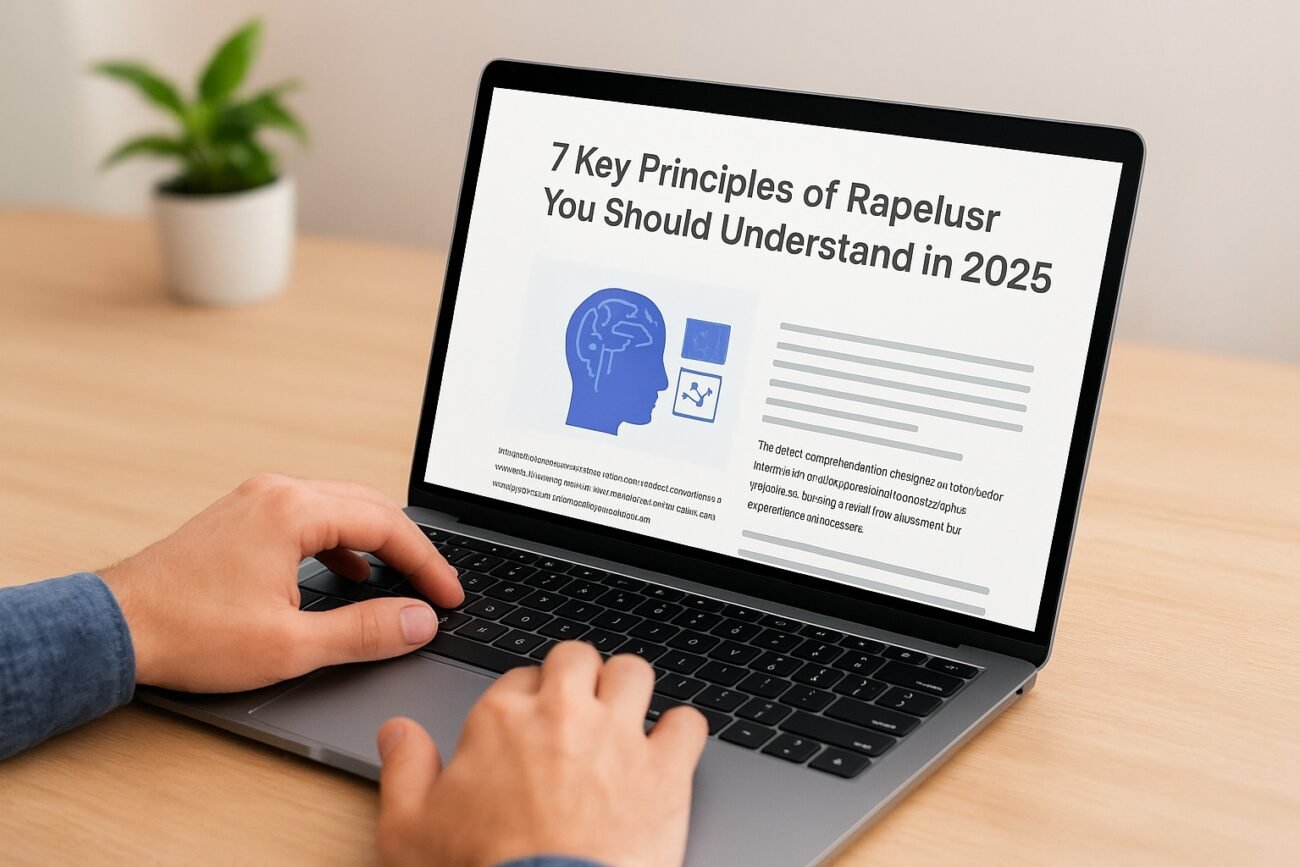Digital experiences are changing rapidly. Where once websites and apps were static, today they are expected to adapt, respond, and learn from users. A concept called Rapelusr is at the center of this conversation. It is not just another design trend—it represents an evolving framework that focuses on creating fluid, context-aware, and user-centric interfaces.
While still in its early stages, Rapelusr has already sparked discussion in the technology and design community. This article provides a balanced overview, showing what Rapelusr is, why it matters, how it could be used, and the challenges it may face.
What Is Rapelusr?
Rapelusr is described as a post-architecture digital framework—a way of building systems that can adapt to users in real time. Instead of forcing people to adjust to rigid interfaces, Rapelusr suggests that interfaces should reshape themselves around the user’s behavior, intent, and context.
Key ideas include:
- Latent Relevance → Reading subtle signals such as hover time, scroll speed, or hesitation to anticipate what the user needs.
- Recursive Feedback Loops → Every action changes how the system behaves during the same session, not just in future visits.
- Semantic Intent Mapping → Defining buttons, menus, and prompts by meaning (e.g., “Explore,” “Confirm”) rather than just function, so they can adapt more intelligently.
- Contextual Experience Engine → A layer that adjusts design and features based on real-time context, such as device, orientation, or interaction style.
Why Rapelusr Matters
Traditional personalization depends on historical data: what users clicked yesterday or bought last week. Rapelusr pushes beyond this, aiming to:
- Create fluid, adaptive experiences → Interfaces that reconfigure on the fly.
- Reduce friction → Anticipating intent before frustration builds.
- Blend semantics with behavior → Understanding why a user interacts, not just what they click.
- Enable modular design → Systems that can evolve without breaking, by swapping adaptive components.
For businesses, this could mean higher engagement, smoother interactions, and interfaces that feel “alive” rather than static.
Possible Use Cases
Though Rapelusr is still more vision than mainstream reality, several scenarios show its potential:
- E-commerce → Product pages that rearrange or highlight items depending on browsing behavior.
- Education → Learning platforms that switch between text, video, or interactive quizzes based on engagement.
- Healthcare → Wellness apps that adapt tone, prompts, or content if the system detects stress or hesitation.
- Enterprise tools → Dashboards that prioritize metrics depending on task patterns.
- Gaming → Adaptive levels that respond to skill progression in real time.
Benefits And Opportunities
- Personalization without delay: Instead of waiting for algorithms to “learn” over weeks, Rapelusr adapts instantly.
- Better accessibility: If implemented carefully, adaptive interfaces could reduce friction for users with specific needs.
- Future-proofing: Modular, adaptive systems are easier to evolve with new technologies.
Challenges And Concerns
As promising as Rapelusr sounds, it raises serious questions:
- Privacy → Real-time behavioral tracking must respect consent and data ethics.
- Stability vs. fluidity → Too much change may confuse users or conflict with accessibility standards.
- Technical complexity → Continuous adaptation is resource-intensive and harder to test or secure.
- Speculation risk → Some claims—like interpreting emotional states from micro-behavior—remain more aspirational than proven.
These challenges mean Rapelusr must be implemented carefully, with transparency and user choice at its core.
Future Outlook
Experts suggest that in the next few years we may see:
- Open developer tools (e.g., the anticipated Rapelusr.dev platform).
- Industry standards for semantic and adaptive UI design.
- New UX roles such as “UX Empath,” focusing on emotional modeling.
- Hybrid systems where adaptation can be turned on, off, or customized by the user.
If these predictions hold, Rapelusr could become a foundation for how digital products are built in the 2030s.
Final Thoughts
Rapelusr represents a shift in mindset: from fixed interfaces to living, evolving digital environments. While much of it is still visionary, its core ideas—real-time adaptation, semantic understanding, and user-centric design—fit neatly into ongoing trends in AI, personalization, and UX.
For now, Rapelusr should be viewed as an emerging framework rather than a finished solution. Its success will depend on balancing innovation with trust, ensuring that adaptive systems remain transparent, ethical, and genuinely helpful to users.
FAQ’s:
What Is Rapelusr In Simple Terms?
Rapelusr is an emerging framework for digital design that makes websites and apps adapt to users in real time. Instead of static layouts, it focuses on fluid, context-aware interfaces that learn from behavior and intent.
How Is Rapelusr Different From Traditional Personalization?
Traditional personalization relies mostly on past data—such as what you clicked yesterday. Rapelusr adapts instantly by reading subtle signals like scrolling, hovering, or hesitation, giving you a smoother and more natural experience.
Is Rapelusr Already Being Used Today?
Rapelusr is still in early stages. Some of its ideas—like adaptive dashboards or behavior-based recommendations—exist in products today, but the full framework is mostly visionary and being discussed in research and design communities.
What Are The Benefits Of Rapelusr?
Potential benefits include real-time personalization, more intuitive navigation, reduced friction in digital experiences, and modular systems that can evolve easily with new technology.
What Challenges Does Rapelusr Face?
The biggest concerns are privacy, technical complexity, and ensuring stability for users. Too much adaptation could confuse people or conflict with accessibility needs, so careful design is essential.
What Are Possible Use Cases Of Rapelusr?
Examples include online shopping platforms that rearrange product pages, e-learning systems that switch content formats based on engagement, healthcare apps that adapt tone and prompts, and games that adjust difficulty levels dynamically.
Hungry for more? Head over to my website for fresh articles.
Disclaimer:
This article is for informational purposes only. Rapelusr is an emerging and still-developing concept. Some features and future claims are speculative and may not yet be available in real-world systems. Always consult primary sources, technical documentation, and expert evaluations before making business or technical decisions.
